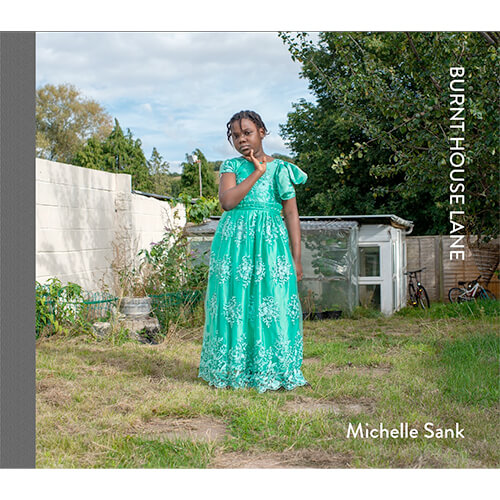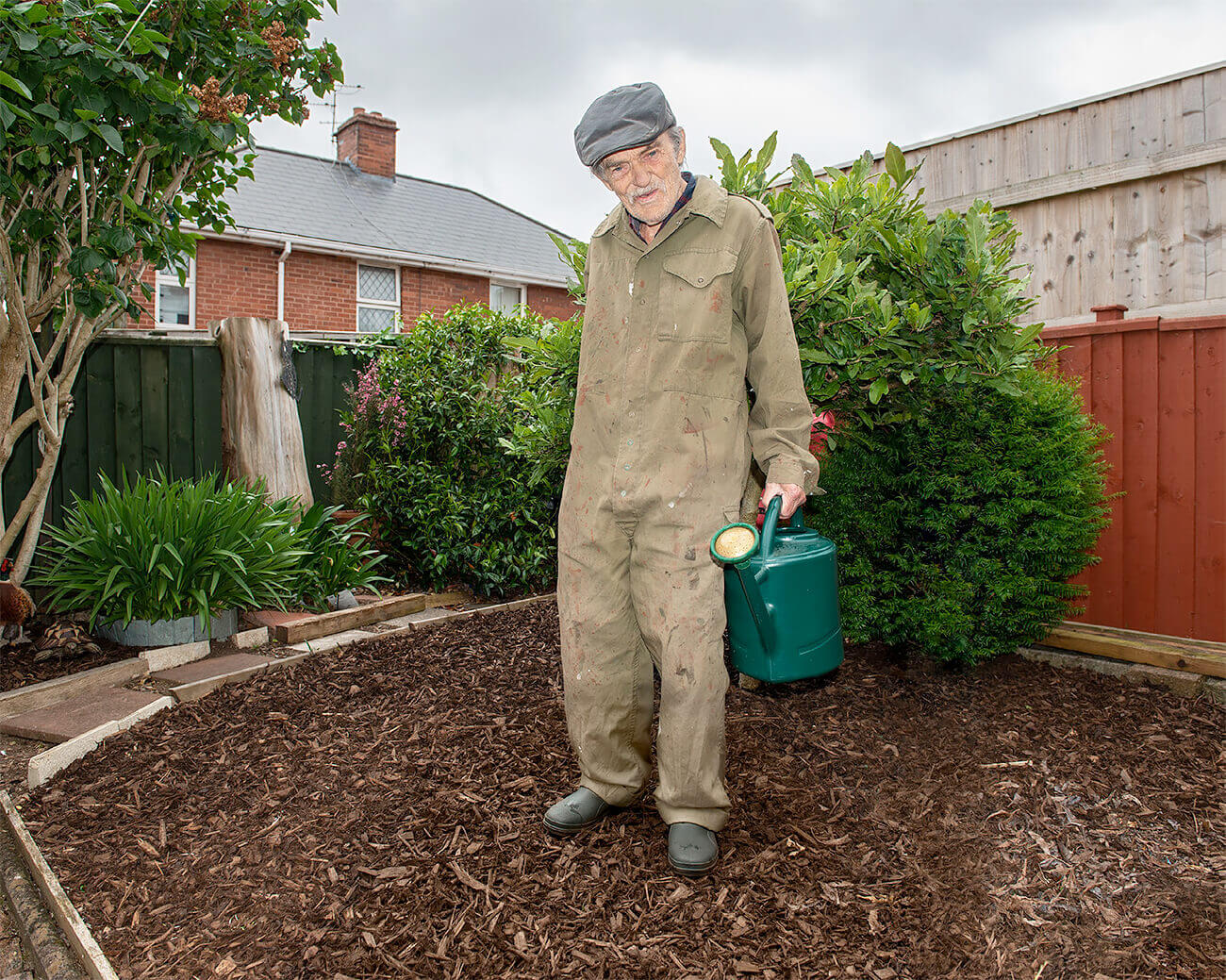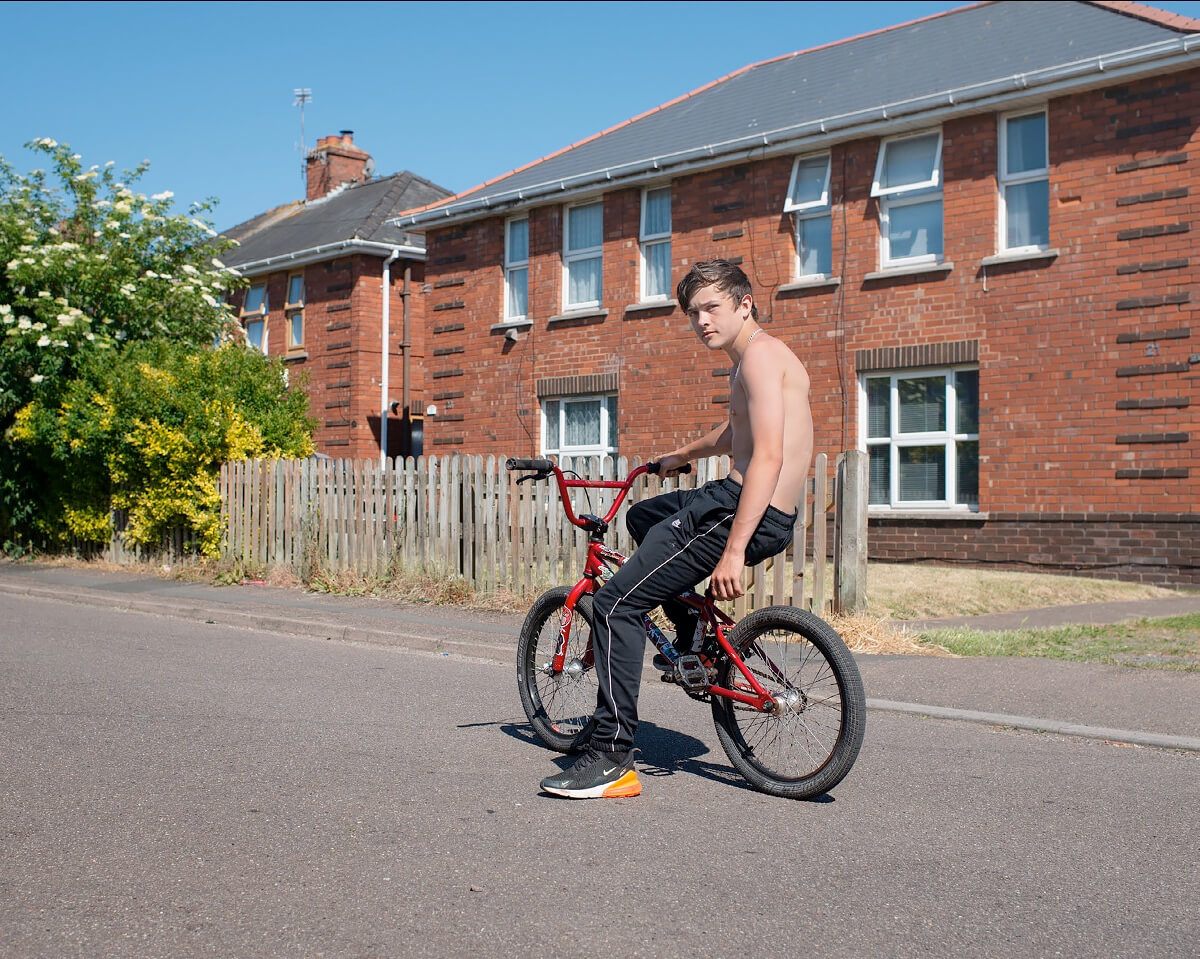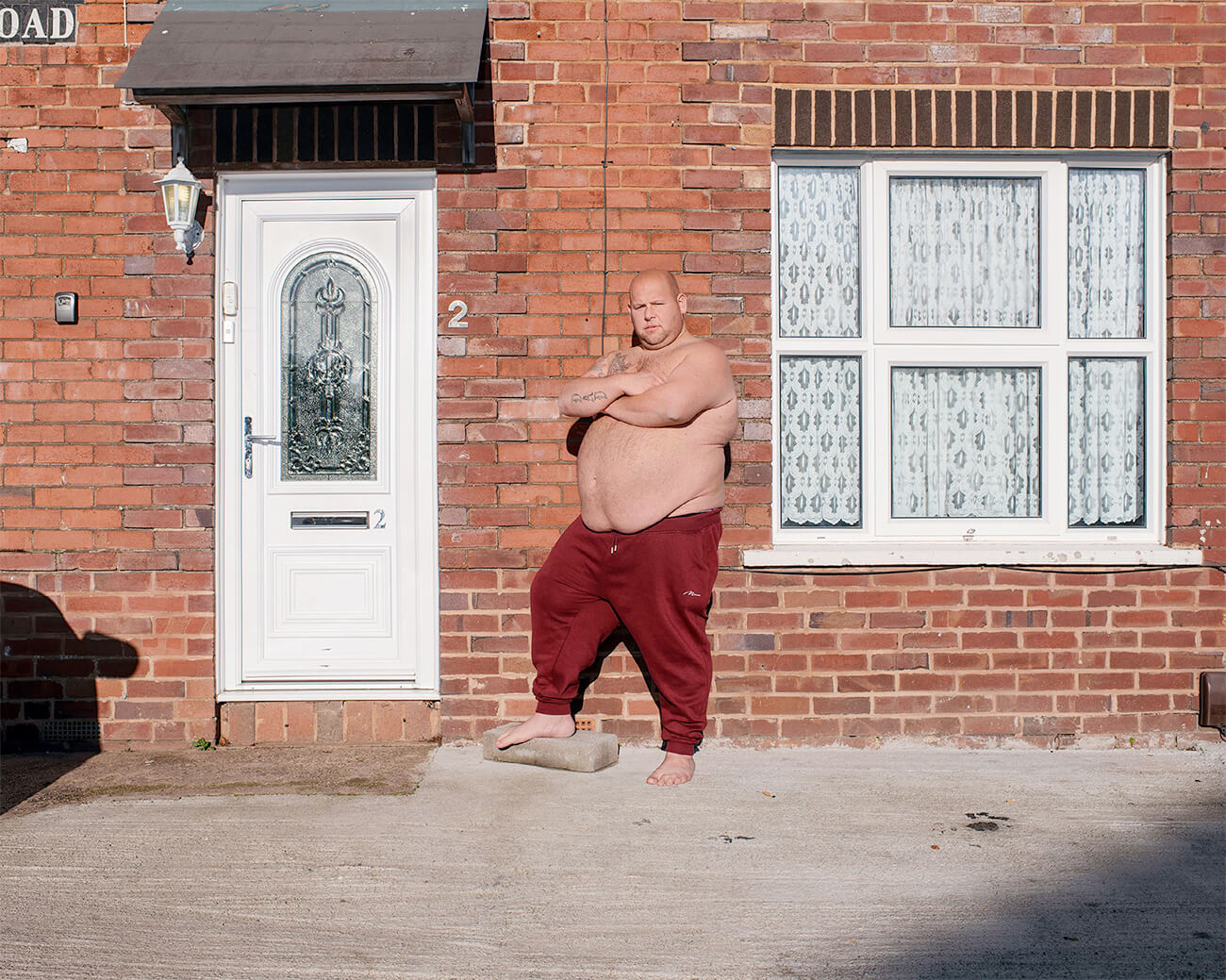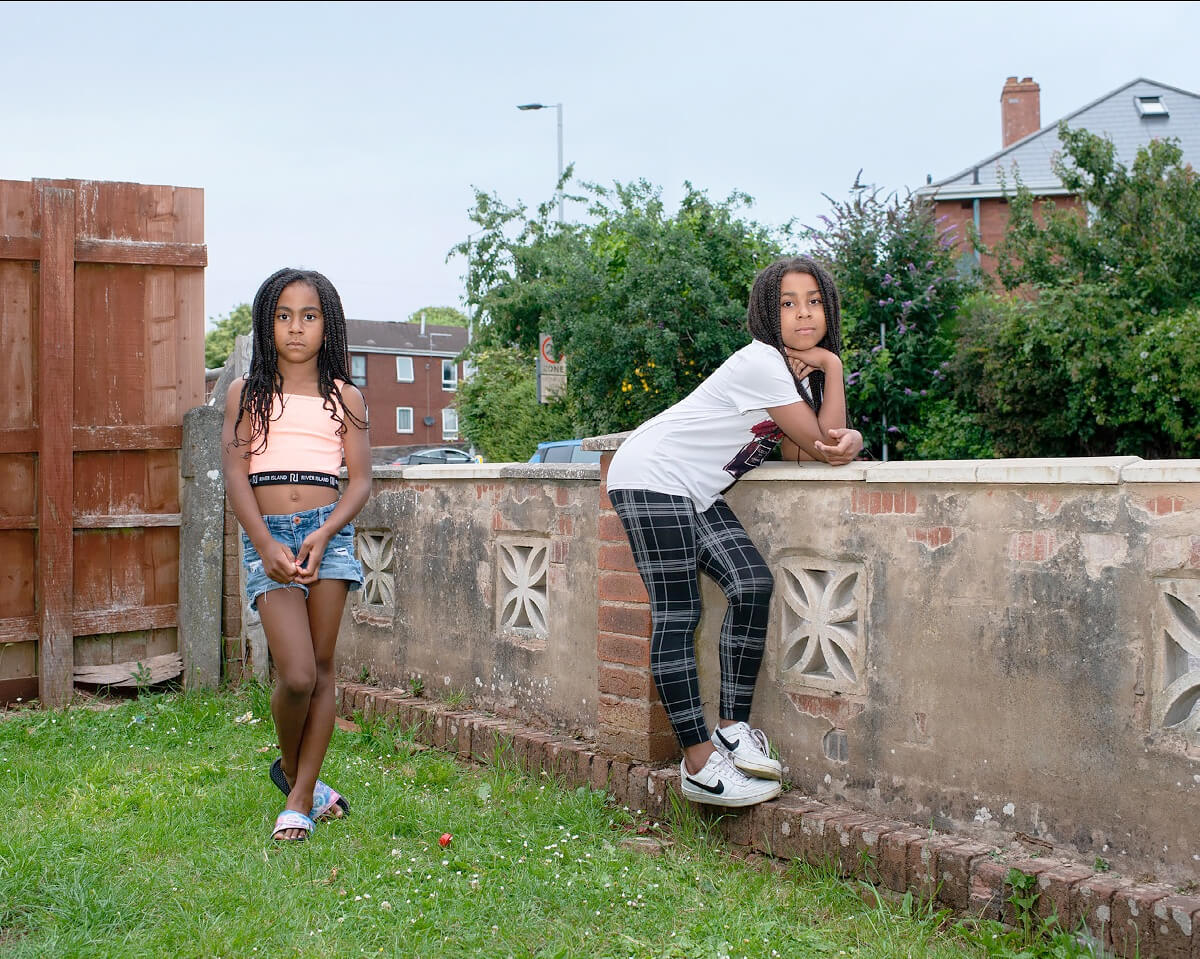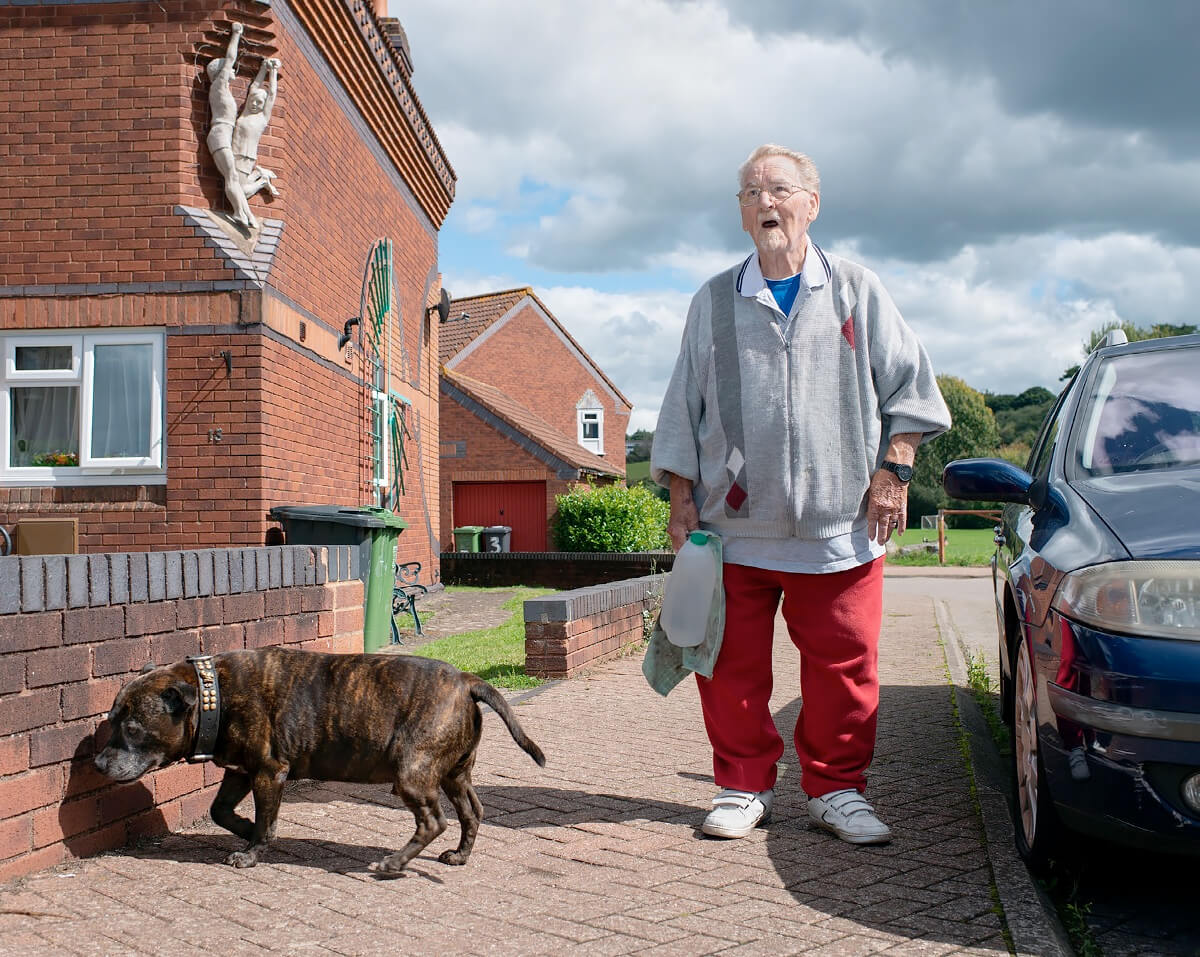We're delighted to be collaborating with Michelle Sank on her
Kickstarter campaign for the book Burnt House Lane which we plan to publish in the summer.
The work is a stunning portrait of a diverse community living on the outskirts of Exeter on a housing estate conceived in the idealistic 1920s to rehouse people from one of the city's slums. It was designed along Garden City lines and purposely self-contained.
The deprivation it was supposed to overcome has continued to haunt it, but its isolated nature and its intricate labyrinth of lanes have also made for positives – a close-knit community and a sense of solidarity among the residents.
Michelle Sank was born in Cape Town, South Africa. She left in 1978 and has been living in England since 1987. Her images reflect a preoccupation with the human condition and to this end can be viewed as social documentary. Her work encompasses issues around social and cultural diversity. Michelle has exhibited widely and her work is included in several public and private collections. Burnt House Lane will be her fourth book.
Michelle Sank explains the project
My work has always encompassed the presentation of identity within both portrait and landscape, creating sociological and psychological narratives borne from my upbringing in South Africa. Being the daughter of Latvian refugees there and witnessing the injustices of Apartheid has led to my interest and empathy in documenting the human condition and those often marginalised, affording them a positive voice and presence.
This Kickstarter will support the book publication of a new body of work that documents such a community: Burnt House Lane - which is situated close to where I currently live in Exeter, UK.
Often considered a no-go area, my experience has been completely different – it is one where I have been welcomed and embraced within the community.
It is this positivity that I wanted to highlight. I have always been drawn to this area because of the way it embraces diversity and the individuality that emanates from this – both in the way people express themselves but also how this is reflected in the adornment of their properties which for the most part have identical fabric, but which are charged with a personal stamp in the gardens, in the windows and even in the wall faces - my use of strong colour and light accentuating this sense of celebration.
The Burnthouse Lane estate was first dreamt up by Exeter Council in the idealistic 1920s to rehouse impoverished people from the West Quarter slum. Designed along Garden City lines and purposely self-contained it was a place for working-class families to live. In the 1980s, Margaret Thatcher’s Right to Buy scheme meant that some of the properties became privately owned, but Burnt House Lane is still referred to as a council estate. The deprivation it was supposed to overcome has continued to haunt it, but the isolated nature of the estate and its intricate labyrinth of lanes, have also made for positives, such as a close-knit community and a sense of solidarity among the residents.
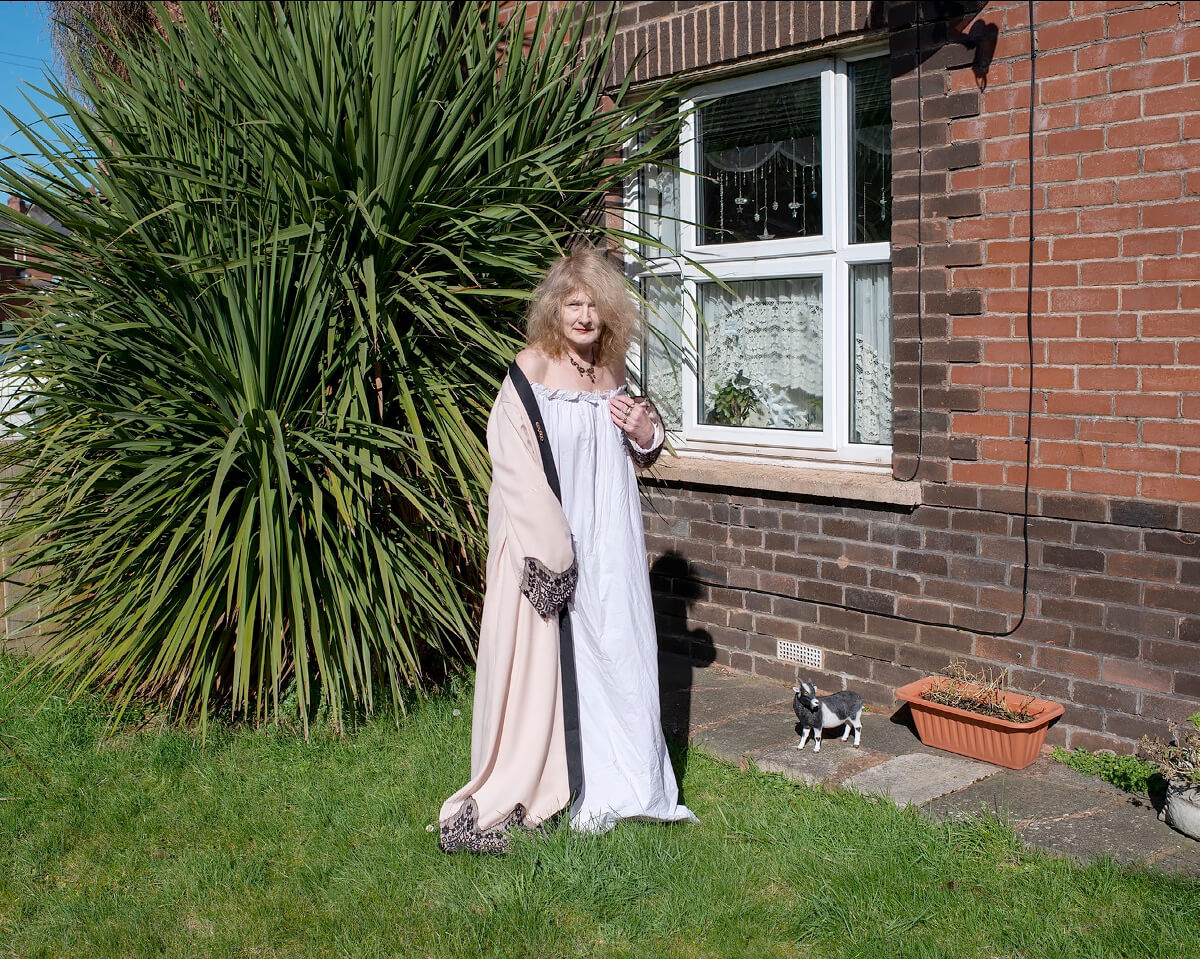
The late David Goldblatt who was a mentor wrote in my very first Monograph about my environmental portraiture that there is “an unstrained yet visually sophisiticated synthesis of subject and context…..nor are people typecast or stereotyped; they are just ‘ordinary'. They seem completely themselves, Sank has allowed each of them simply to be … yet it is not a passive state, something has been evoked that seems to come from deep within … it is the unique spirit of the other person.
It is this methodology that I deployed when I first explored the area 20 years ago when undertaking my MA and then returning again in 2020. What began during Covid as a means to connect to the world during lockdown, led to me walking the lanes almost daily meeting people who afforded me the opportunity to collaborate. This resulted in an in-depth document of this unique community where in many cases lasting friendships have resulted, also reconnecting with people I first met 20 years ago.
It is so important to me and the community that this book is published and is around for posterity as a positive reflection of the people and place that has so often been maligned in the past.
I would therefore be so grateful for your support in being able to bring this book to fruition.
he work has been exhibited in a major exhibition at the Royal Albert Memorial Museum in Exeter and a selection of the images were brought by the Contemporary Art Society in London to be housed in the museum archive as a representation of this community and this time in history. It has also been published in the Wellcome Foundation stories, Wellcome Collection, London and has gained recognition in awards to include PhotoReview, International Photography Awards, the Julia Margaret Cameron Award and the British Journal of Photography Portrait of Britain.
Images from the series will be exhibited in 2024 at Elliott Gallery in Amsterdam.
